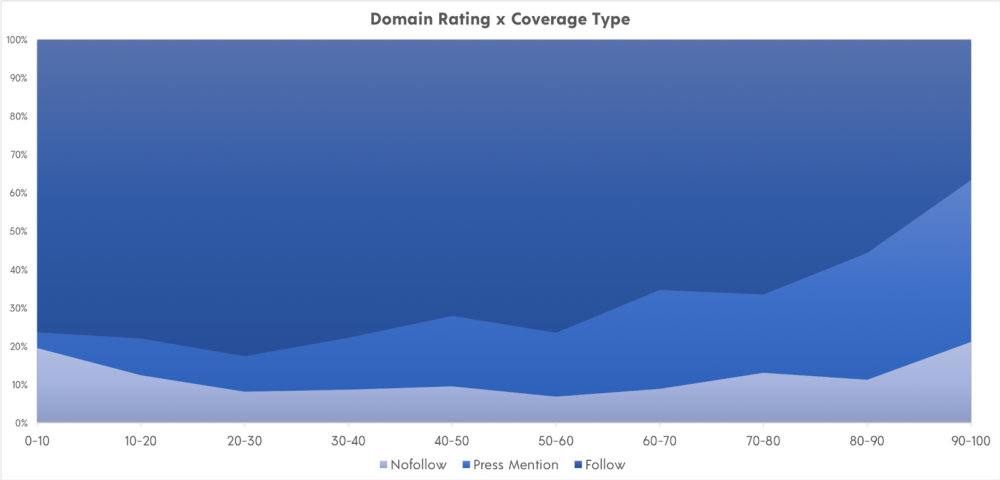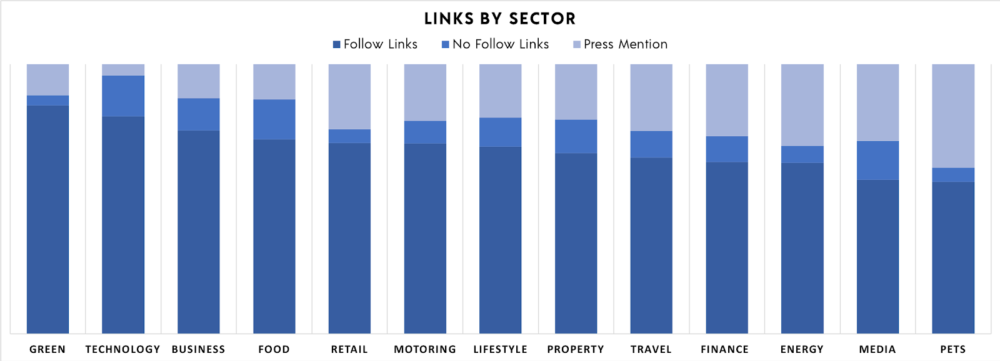digital-pr
What’s Your Type? The Factors That Decide the Type of Coverage You’ll Be Getting
Published: 02/03/20 - Updated: 02/03/20

An implicit truth that exists in the world of digital PR and the endless quest for success is the small but significant presence of luck. Behind every campaign stands an amalgamation of creative and operational effort made by an agency or a brand, and that’s without mentioning the level of experience and preparation that goes into each one. However, not every member of this vast industry would enjoy admitting that even with those surefire, guaranteed, perfect campaigns you know will do well, there remain elements of fortune that are not in your control.
Whether it’s the time of day, your choice of wording or the type of mood you’ve managed to find a journalist in when your press release lands in their inbox, there is always a feeling of ‘what if’, regardless of success or failure. Sometimes it’s just a convenient excuse for poor performance, but what if it really is a case of time and place?
But, when you discover a piece of coverage that is the foils of your own labour but is not kindly attributed with a follow link back to your site, or that of your client, you start to become an ardent believer in bad luck. By all other accounts, as a PR you have done your job correctly if you’ve secured a press placement, so the aforementioned outcome is a slight kick in the teeth.
I am a person that doesn’t often believe in luck, fate, coincidence or miracles, which generally makes you seem like a miserable person but sometimes it means that you can write a pragmatic blog post about press coverage and data. Specifically, I want to shed light on my own findings in relation to the contributing factors towards getting the type of coverage you may or may not want. I’ve studied how the quality of a publication and the industry you’re operating within can, in turn, determine the sort of placement you are more likely to get on your campaign.
The quest for quality
The goal of any campaign in our industry is, largely, carried out with the intention of securing high authority and relevant placements in the right publication. You might measure success through Ahref’s domain rating, Moz’s authority or the mass of metrics provided by Majestic, but at a base level, we are judged on whether a link is a follow link or not.
Achieving coverage in the top tier publications is made difficult by the competition in this space, and also the perceived level of quality your own content has to have to deserve to be on their site. What makes this uphill battle all the more difficult is the frequency of no-follow links or brand mentions that are given out on these sites in return for your content. The problematic nature of this cycle means that we set our sites lower, focusing on the tier of publications that might be more likely to hand out follow links. I wanted to take a look at the links we’ve achieved over the past 18 months to decipher how quality of publication can determine the type of coverage you get.

Depending on how you refer to the higher and lower tiers of publications, it’s largely considered that anything beyond the 90 mark for domain rating or authority sits in the ‘dream’ category. However, this ‘dream’ becomes something of a nightmare for those carrying out the work, when we consider that, based on these figures, over 60% of placements achieved in this bracket are not follow links. Quite simply, if you outreach to publications in this tier, you’re more likely to get a result that doesn’t contribute towards your target (if it’s solely follow links you’re after).
The silver lining on this somewhat depressing statistic is that this is the only domain rating bracket where a follow link is not the most likely outcome. Online media rated between 80-90 by Ahrefs gives you a 56% chance of success, with the likelihood increasing further as you look at publications with lower authority.
Furthermore, if we were to pinpoint a ‘sweet spot’ in the struggle between authority and follow link probability this would sit somewhere between 50 and 60 DR, where PRs are over 3 times more likely to get the type of link thereafter without having to sacrifice too much in terms of quality. The natural argument against this is that the time and likelihood of achieving just one ‘dream’ follow link compared to 10 in the middle bracket of quality is a far more worthwhile return-on-investment from an SEO perspective. Much like anyone speaking subjectively on this issue, I don’t have the answers, but it gives us some needed context on the often complicated fight for high-quality coverage.
Industry importance
In the same way that we are overtly aware of the difficulties of achieving top tier follow links, in PR we also like to think we know which sectors or industries work well. Shoehorning in a topic into the campaign you’re making is admittedly challenging, but necessary. We do it safely in the knowledge that adding breadth to a piece expands its relevance to a mass of publications we feel we can guarantee a better success rate in. These niches that we make our content relevant to are based on what we think is safe or are more likely to land coverage.
From ‘pet pieces are easy’ to ‘gambling content is tough’ we all have our own set of outreach truism that can often misguide the type of campaigns we create. Ignoring the quantity of coverage achieved in each sector, I’ve carried out an analysis of the ratio of coverage between links, brand mentions and no-follow links to which industry you’re statistically better off making content in.

Among the campaigns analysed, the most fruitful industries to attain follow links in are those relating to topics surrounding green/environmental, technology and business. All these sectors have a probability of follow links that exceed 75%, while topics relating to media/pop culture and pets score much lower around the 56% mark. While many of us in our lines of work have witnessed pet content achieve viral status, it might come as a surprise that proportionally you’re less likely to get the type of coverage that you’re after.
Conversely, while the presence of industries such as technology and business in the top 3 are unsurprising, given their breadth, one would not necessarily predict ‘green’ content to be offering a better yield of follow links on average. Returning once again to the more negative findings from the research, across all sectors we see that every placement has almost a 1 in 3 chance of not being a follow link. While the industry you operate in is rarely something that you can change, it’s important to carry a grounded awareness of the importance of having a pivot to another topic/niche. With the figures above we are able to see which industries are able to complement each other, in the fact that one may offer a good return in terms of quantity while another may boast a better proportion of link type.
Final thoughts
While much of the data exhibited is simply a recognition of the current state of play for digital PR, I believe that it can prove useful in a number of ways. Firstly, being able to take into account a level of expectation into every campaign is always valuable, particularly with regard to the quality of coverage you are getting and the type that it is. As you set your sights higher on domains with high authority, be prepared, as you may already be, to watch open rates, reply rates and the likelihood of attaining follow links drop. In terms of the figures relating to industries and topics, these should only act as a prompt for you to analyse the sectors you operate within, and see if the same story is being told. If you know you’re more likely to receive unlinked coverage in a specific sector, and have the ability to pivot to other niches, then do. Until we are able to truly decipher the value and benefit of no-follow and brand mentions then we must rely on the data we have, as well as a bit of luck.

